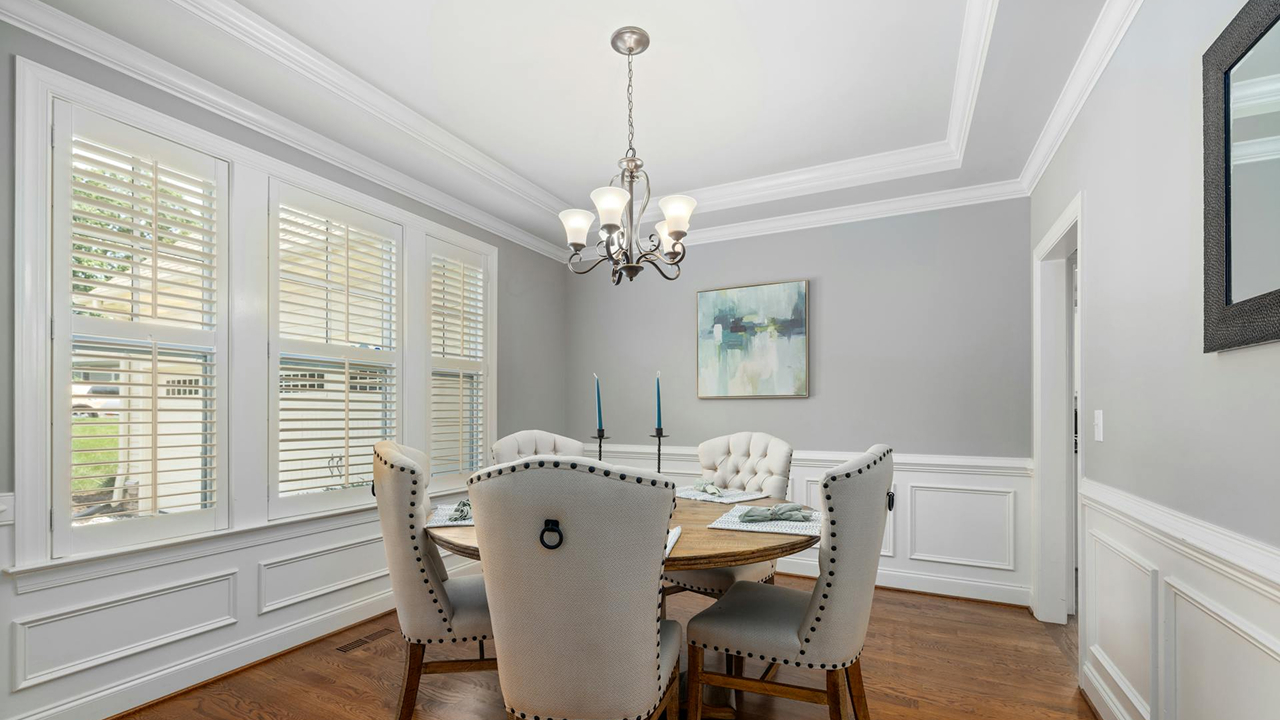How to make your entire house feel more cohesive
The goal isn’t sameness; it’s continuity. When lines, finishes, and function repeat in smart ways, the whole home reads intentional—no matter what the square footage looks like.
Let architecture lead your decisions

Start with the bones: ceiling height, window style, casing profile. Match new trim to the existing profile or simplify to the cleanest version you can repeat everywhere. If your house has arches, let that curve echo in a mirror or lamp; if it’s all straight lines, keep curves as accents, not the main story. The bones set the style—you’re just translating it.
Pick a trim and door strategy

Doors and trim are the quiet chorus. Stick with one trim color and sheen, then choose whether doors match trim, walls, or go darker as a tailored moment. Whatever you pick, repeat it. Consistent doors and trim make even small rooms feel like part of something bigger.
Standardize how you hang art

Decide on an “eye line” and keep bottoms of frames aligned over furniture. Go larger and fewer in shared spaces; keep gallery walls to hallways or a single hero wall. Matching frame colors within a zone keeps the art varied but the view calm. The rule—not the print—does the heavy lifting.
Repeat hardware scale and feel

You can change styles between rooms, but keep scale and substance consistent. Cabinet pulls should fit a hand; door levers should feel solid, not hollow. Match hinge and strike plate finishes to the lever so details don’t fight. Touchpoints are the handshake of the house—make them feel related.
Use a “language” for textiles

Pick a shared vocabulary—linen panels, cotton quilts, wool throws—and let color shift within the same family. The weave, not the pattern, carries the connection. When every room has one nubby, one smooth, and one soft layer, the house feels intentional even with different palettes.
Keep one material story per sightline

From the sofa, you might see kitchen hardware, dining chairs, and a console. Let two materials do the talking and echo them three times. Oak + black metal is enough. Add brass here only if it repeats nearby; otherwise, save it for a closed room. Cohesion is mostly restraint.
Make thresholds work for you

If flooring changes at a doorway, let a runner or small rug bridge the palette so tones shake hands. Repeat the darker floor in a frame or stool on the lighter side. Even when materials change, a little color echo keeps the story going.
Align function with how you live

Create a landing strip at the most-used entrance, a reading chair near the window that actually gets light, and a serving station close to the table. When rooms respect your routines, the house feels designed—even if nothing is fancy. Function is the fastest route to “this belongs together.”
Unify with scent and sound (quietly)

A single candle scent family and low music from the same small speaker profile make rooms feel related at a level most people can’t name. It’s subtle, but it matters—especially at night when lighting and mood carry the load.
Protect it all with a nightly reset

Fold throws, clear trays, click lamps. The lines you set during the day only stay if you guard them. Consistency is what makes “belonging” stick.
Like Fix It Homestead’s content? Be sure to follow us.
Here’s more from us:
10 things that make your house feel less welcoming without saying a word
10 Upgrades That Make Your House Look Fancier Than Your Neighbor’s
*This article was developed with AI-powered tools and has been carefully reviewed by our editors.







